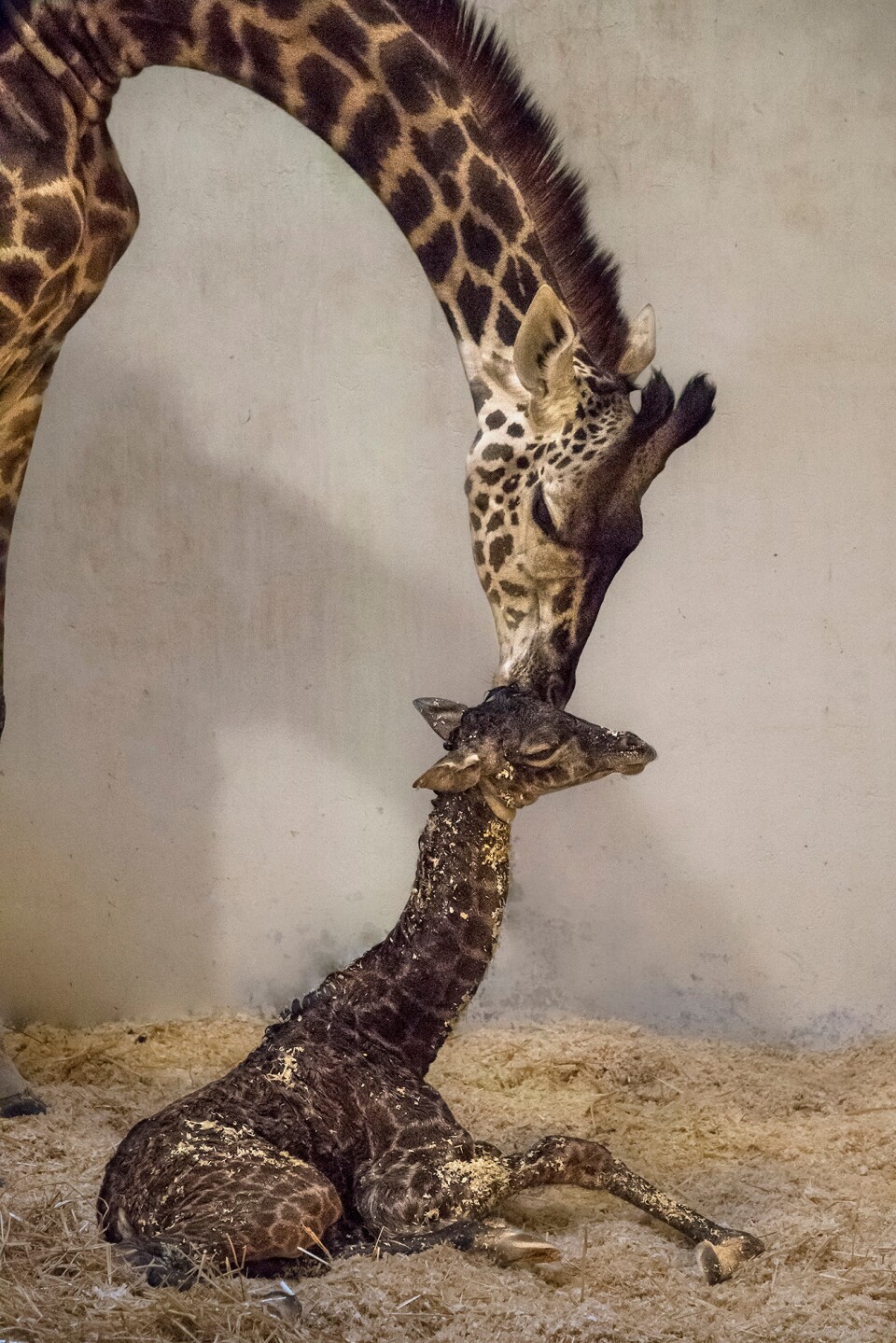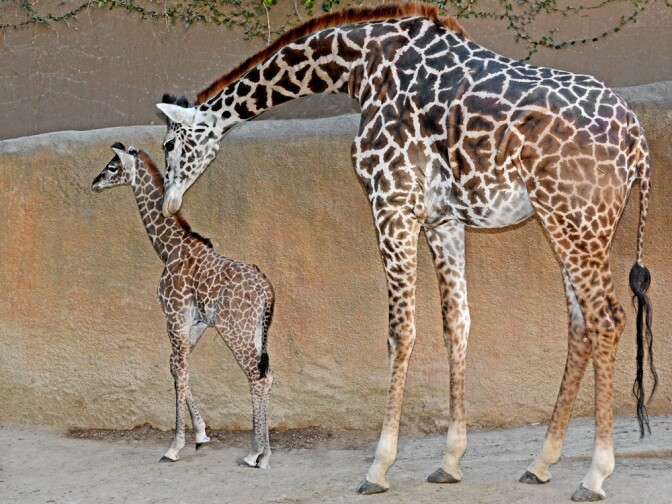With our free press under threat and federal funding for public media gone, your support matters more than ever. Help keep the LAist newsroom strong, become a monthly member or increase your support today.
LA Zoo turns 50 — and delivers a baby giraffe
The Los Angeles Zoo has welcomed a baby giraffe into the world just in time for its 50th anniversary celebration.
The as-yet unnamed female Masai giraffe, weighing in at a healthy 130 pounds and standing 6 feet tall, was born on Nov. 9, zoo officials announced Tuesday.
Monday will mark 50 years for the L.A. Zoo, which plans to host a celebration open to the public that day. But visitors don’t have to wait that long to see the new calf. She can be seen along with the rest of her herd every day at the giraffe exhibit, depending on the weather.
“Baby giraffes are extremely curious, so when you come and visit her, she’s always going to be running around, and she’s always a hit with the public,” said Josh Sisk, the zoo’s mammal curator.
Sisk said the zoo has several different ways to come up with names, including public contests, and that they will likely decide what to do within a week or two.

The new calf joins five other Masai giraffes at the L.A. Zoo. Her mother, 8-year-old Hasina, had previously given birth to two other calves, including last year’s newborn, Mark. Dad Phillip, who is a few years younger, is a first-time father.
Hasina and Phillip were paired as part of a program to help ensure the survival of the species.
Masai giraffes, found in southern Kenya and northern Tanzania, are the largest subspecies of the tallest land mammal on Earth. They can grow up to 17 feet tall and weigh 2,700 pounds. But like all giraffes, they are threatened in the wild because of human encroachment and habitat loss, Sisk said.
With short life expectancies, giraffes could conceivably die out within 30–40 years, Sisk told KPCC.
The Species Survival Plan, a program of the Association of Zoos and Aquariums, helps to prevent that by ensuring genetic diversity among animals in captivity.
Because zoo animals serve as ambassadors to the general public, keeping their population healthy and diverse helps to ensure the overall species’ survival, Sisk said.
“It’s how we’re going to spread the message and educate visitors,” he said.
Sisk likened the SSP to a dating or matchmaking service. Each species has a dedicated committee that reviews the animals at all member zoos and aquariums. Each year the committee recommends which animals should breed and where they should be sent based on population and sustainability, according to Sisk.
Hasina, for instance, will mother another calf when she is ready, and she will continue doing so as long as the committee continues to recommend it, Sisk said.
The SSP aims to maintain a genetically diverse population for the next 100 years.
For its part, the L.A. Zoo has been continuously breeding giraffes since it first opened 50 years ago. And for the staff, overseeing an animal birth never gets old.
“It doesn’t matter how many you have. I mean, every time you have one, it’s very exciting,” Sisk said.
Giraffes stand up when they give birth. The staff could see Hasina was going into labor and placed her inside a barn with plenty of bedding, Sisk said.
“Sure enough, the baby comes out, she’s standing, and it’s kind of that fall to the ground and hit — it’s kind of like their first little jump-start to life and gets the heart going and gets the blood flowing,” Sisk said.
The calf will remain at the zoo until she reaches sexual maturity, and then she’ll have to relocate to another zoo.
For $5, visitors can see her and, yes, even feed her, at the zoo.
Sisk said the L.A. Zoo is pushing a new feeding program to help boost its exposure and transparency by allowing visitors up-close-and-personal experiences with the animals. The program will get a big push at Monday’s celebration and continue every day, indefinitely.
For those planning to attend the celebration Monday, admission will be half-off. You can soon check the zoo’s website for times and other information about the program.









